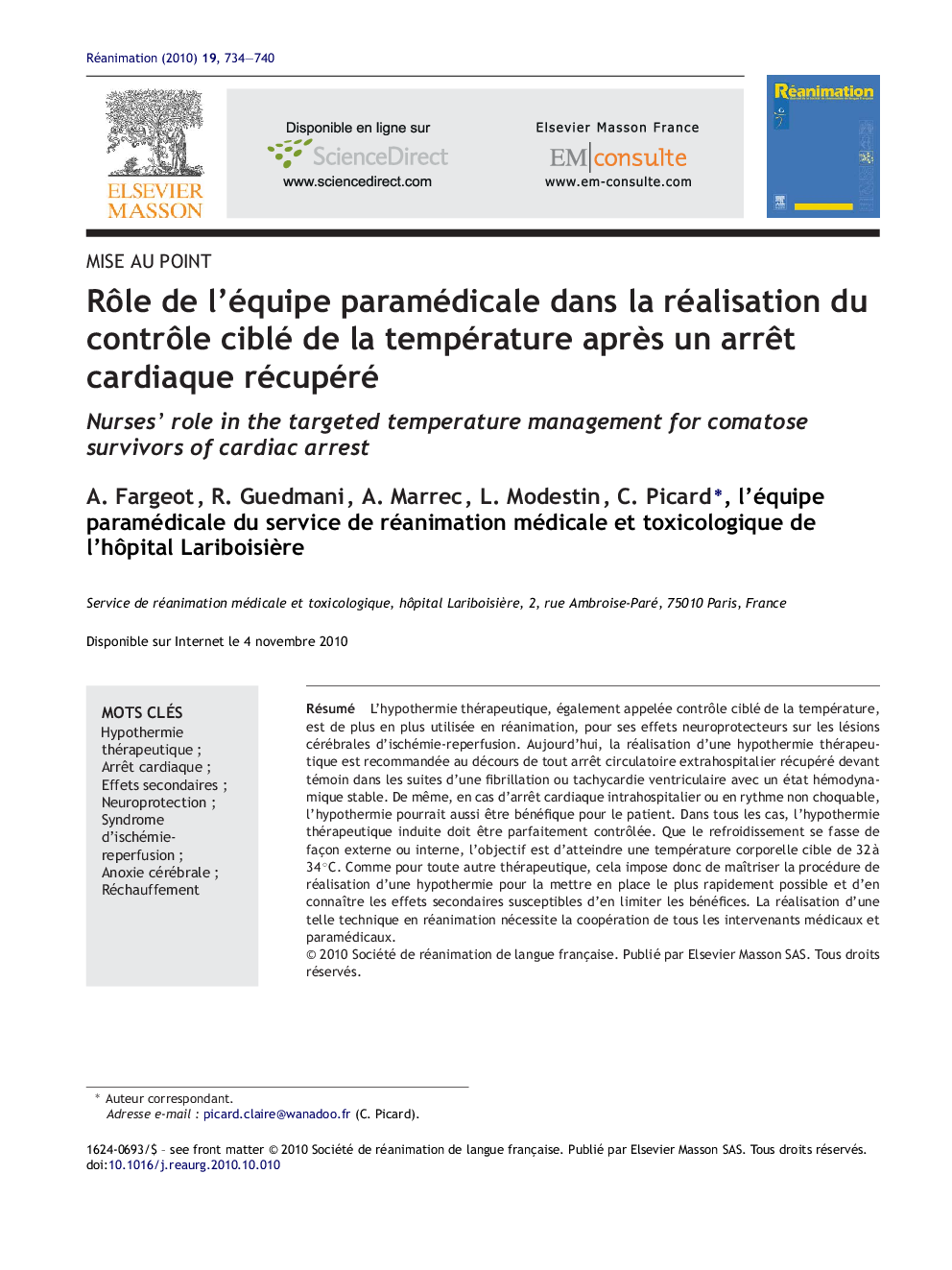| Article ID | Journal | Published Year | Pages | File Type |
|---|---|---|---|---|
| 2611853 | Réanimation | 2010 | 7 Pages |
Abstract
Therapeutic hypothermia, also called targeted temperature management, is increasingly used in the intensive care unit (ICU), based on its assessed neuroprotective effects against ischemia-reperfusion-induced brain damage. Targeted temperature management is indicated in comatose adult patients after cardiac arrest if successfully resuscitated from a witnessed out-of-hospital cardiac arrest of presumed cardiac cause with an initial rhythm of ventricular fibrillation or non-perfusing ventricular tachycardia and in a stable hemodynamic condition. Patients after in-hospital cardiac arrest or with other initial rhythms may also benefit. When indicated, therapeutic hypothermia should be quickly performed and tightly controlled. Both surface and core cooling methods target a body temperature of 32 to 34 °C. Thus, it is mandatory to know how to simply manage the routinely available techniques in order to perform hypopthermia as soon as possible, being aware of all side-effects that may alter the expected benefits. Therefore, implementing hypothermia in the ICU involve the whole medical and paramedical staff.
Keywords
Related Topics
Health Sciences
Medicine and Dentistry
Emergency Medicine
Authors
A. Fargeot, R. Guedmani, A. Marrec, L. Modestin, C. Picard,
